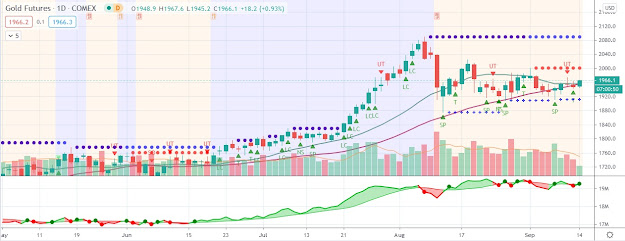China gold investment demand rising at rapid pace
The Shanghai Gold Exchange indicated China imported 210 tonnes in the first 10 months of 2010. During the same period in 2009, China imported 45 tonnes of gold.
 We believe China’s gold production in 2010 should be close 350 tonnes. Legally gold is not allowed to be exported out of China. If the pace of imports during the first 10 months continues in November and December 2010, gold imports into China should be close 250 tonnes. This puts China’s 2010 implied gold demand at 600 tonnes. We believe the rise in gold demand is mainly on the back of increased jewellery and investment demand (industrial demand remains small).
We believe China’s gold production in 2010 should be close 350 tonnes. Legally gold is not allowed to be exported out of China. If the pace of imports during the first 10 months continues in November and December 2010, gold imports into China should be close 250 tonnes. This puts China’s 2010 implied gold demand at 600 tonnes. We believe the rise in gold demand is mainly on the back of increased jewellery and investment demand (industrial demand remains small).
We perform some calculations to put this rise in gold demand in perspective and determine in which sector demand growth in China lies.
During the first 10 months of 2010 China’s retail sales of gold and silver jewellery averaged RMB 10.6bn per month. In 2009 retail sales of gold and silver averaged only RMB6.63bn per month. The 2010 retail sales figures are inflated by rising gold and silver prices. However, even after accounting for price inflation in the gold and silver retail sector in China, we estimate real retail sales of gold and silver jewellery are up 40% y/y in China. However we believe jewellery demand for silver is strong and we cannot ascribe the 40% rise in gold and silver jewellery retail sales mainly to gold. The strong demand for silver in China is evident in the $1.00 (and higher) premium silver is trading at in the OTC market in Shanghai.
In 2009 China’s gold jewellery demand was close to 350 tonnes. This implies, if only half the 40% increase in gold and silver jewellery retail sales in 2010 can be attributed to gold, gold jewellery demand in China may exceed 420 tonnes in 2010. Other fabrication demand and industrial demand in China is relatively small compared to jewellery demand. Therefore we believe the majority of the difference between our estimates for 2010 China gold demand (at 600 tonnes) and our estimate for jewellery demand (420 tonnes) can be ascribed to a rise in investment demand (private and/or state). That is, investment demand in China may be as high as 180 tonnes in 2010 — a rise of 70% y/y in investment demand in China.
 We believe China’s gold production in 2010 should be close 350 tonnes. Legally gold is not allowed to be exported out of China. If the pace of imports during the first 10 months continues in November and December 2010, gold imports into China should be close 250 tonnes. This puts China’s 2010 implied gold demand at 600 tonnes. We believe the rise in gold demand is mainly on the back of increased jewellery and investment demand (industrial demand remains small).
We believe China’s gold production in 2010 should be close 350 tonnes. Legally gold is not allowed to be exported out of China. If the pace of imports during the first 10 months continues in November and December 2010, gold imports into China should be close 250 tonnes. This puts China’s 2010 implied gold demand at 600 tonnes. We believe the rise in gold demand is mainly on the back of increased jewellery and investment demand (industrial demand remains small).We perform some calculations to put this rise in gold demand in perspective and determine in which sector demand growth in China lies.
During the first 10 months of 2010 China’s retail sales of gold and silver jewellery averaged RMB 10.6bn per month. In 2009 retail sales of gold and silver averaged only RMB6.63bn per month. The 2010 retail sales figures are inflated by rising gold and silver prices. However, even after accounting for price inflation in the gold and silver retail sector in China, we estimate real retail sales of gold and silver jewellery are up 40% y/y in China. However we believe jewellery demand for silver is strong and we cannot ascribe the 40% rise in gold and silver jewellery retail sales mainly to gold. The strong demand for silver in China is evident in the $1.00 (and higher) premium silver is trading at in the OTC market in Shanghai.
In 2009 China’s gold jewellery demand was close to 350 tonnes. This implies, if only half the 40% increase in gold and silver jewellery retail sales in 2010 can be attributed to gold, gold jewellery demand in China may exceed 420 tonnes in 2010. Other fabrication demand and industrial demand in China is relatively small compared to jewellery demand. Therefore we believe the majority of the difference between our estimates for 2010 China gold demand (at 600 tonnes) and our estimate for jewellery demand (420 tonnes) can be ascribed to a rise in investment demand (private and/or state). That is, investment demand in China may be as high as 180 tonnes in 2010 — a rise of 70% y/y in investment demand in China.



Comments
Post a Comment